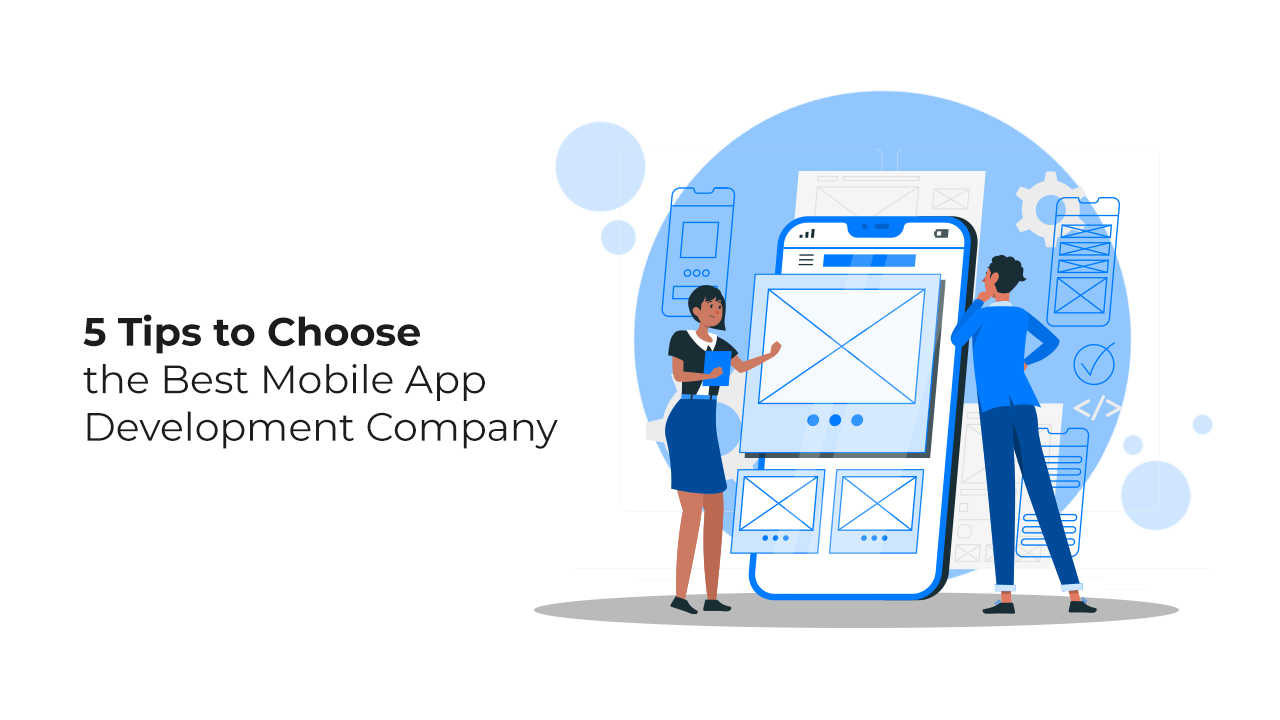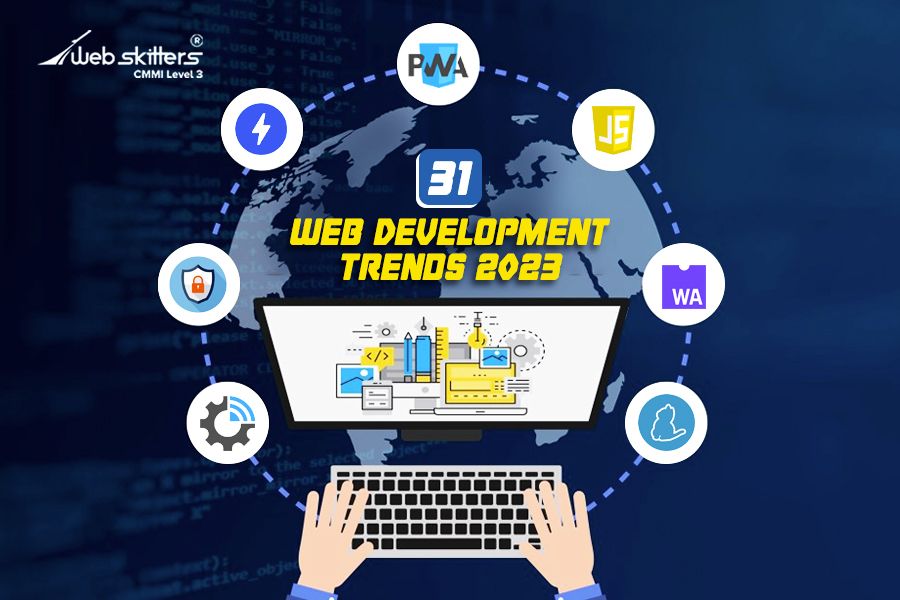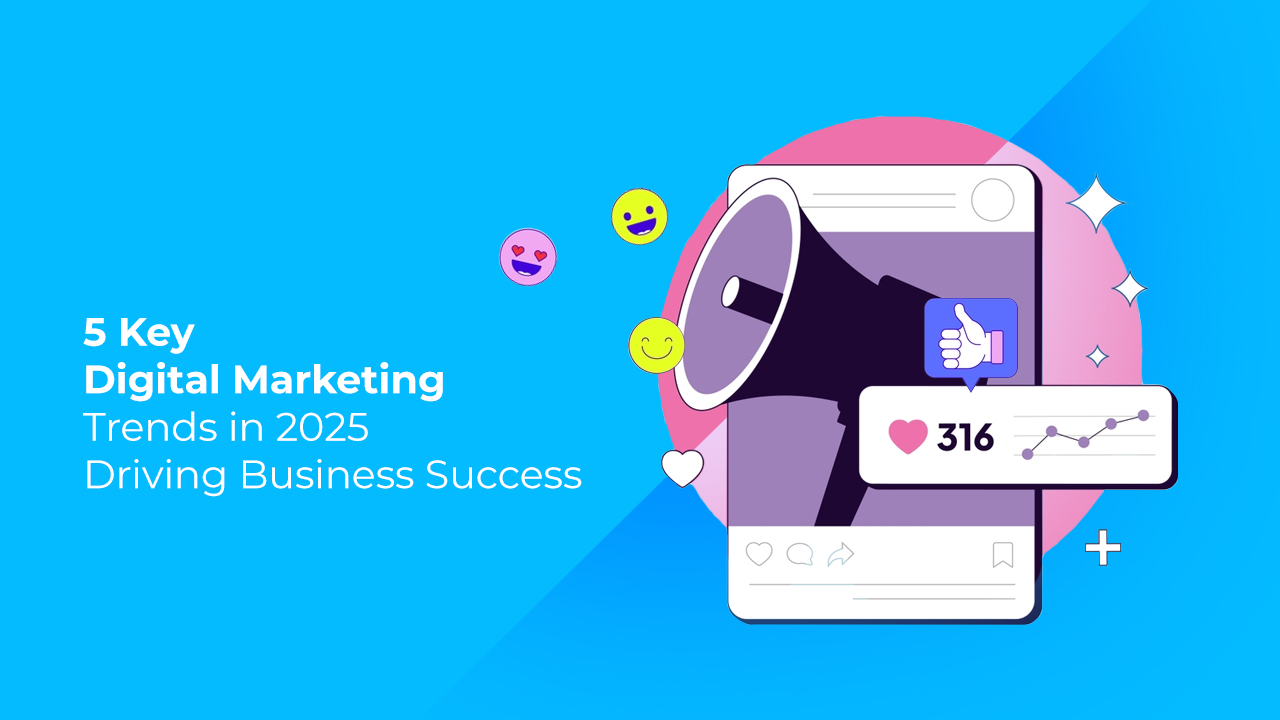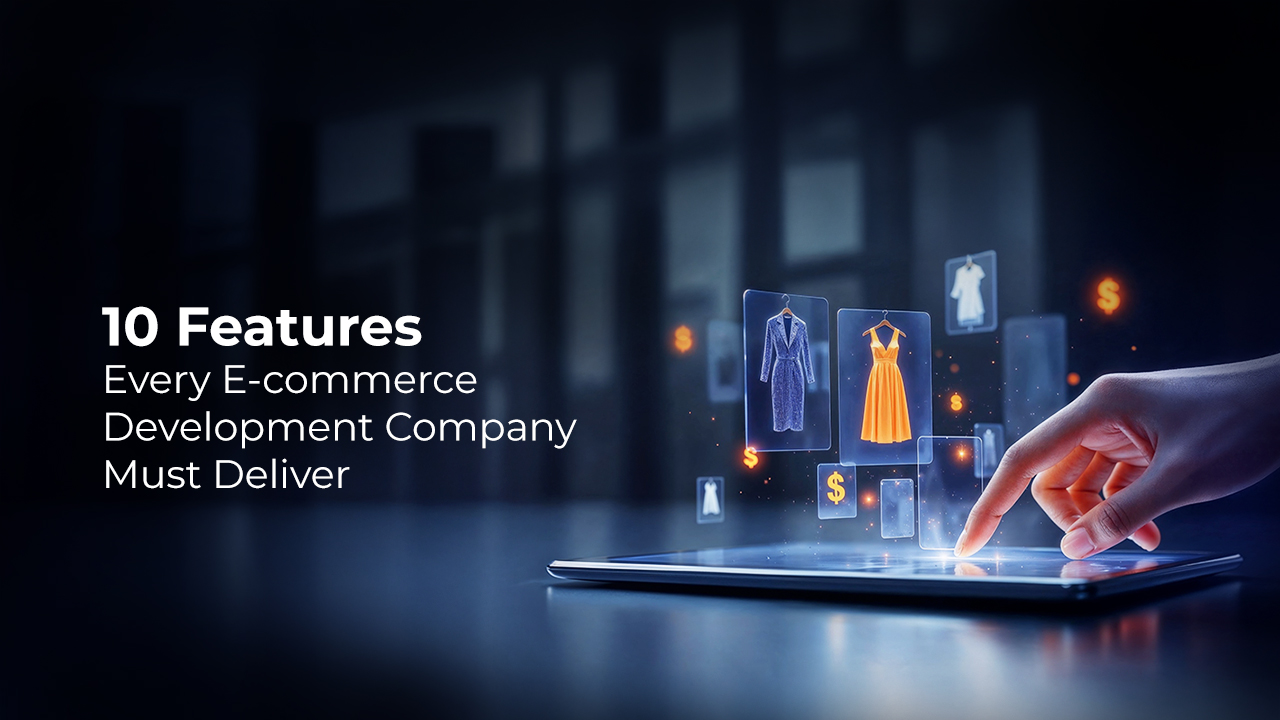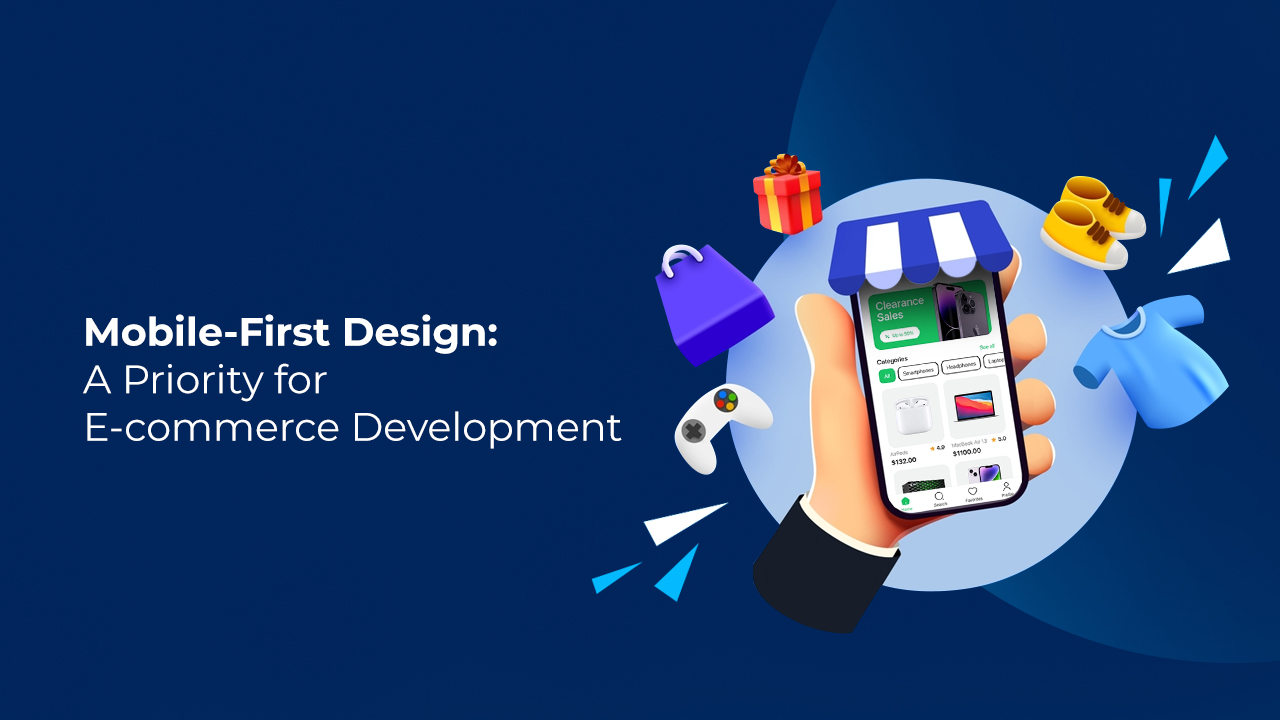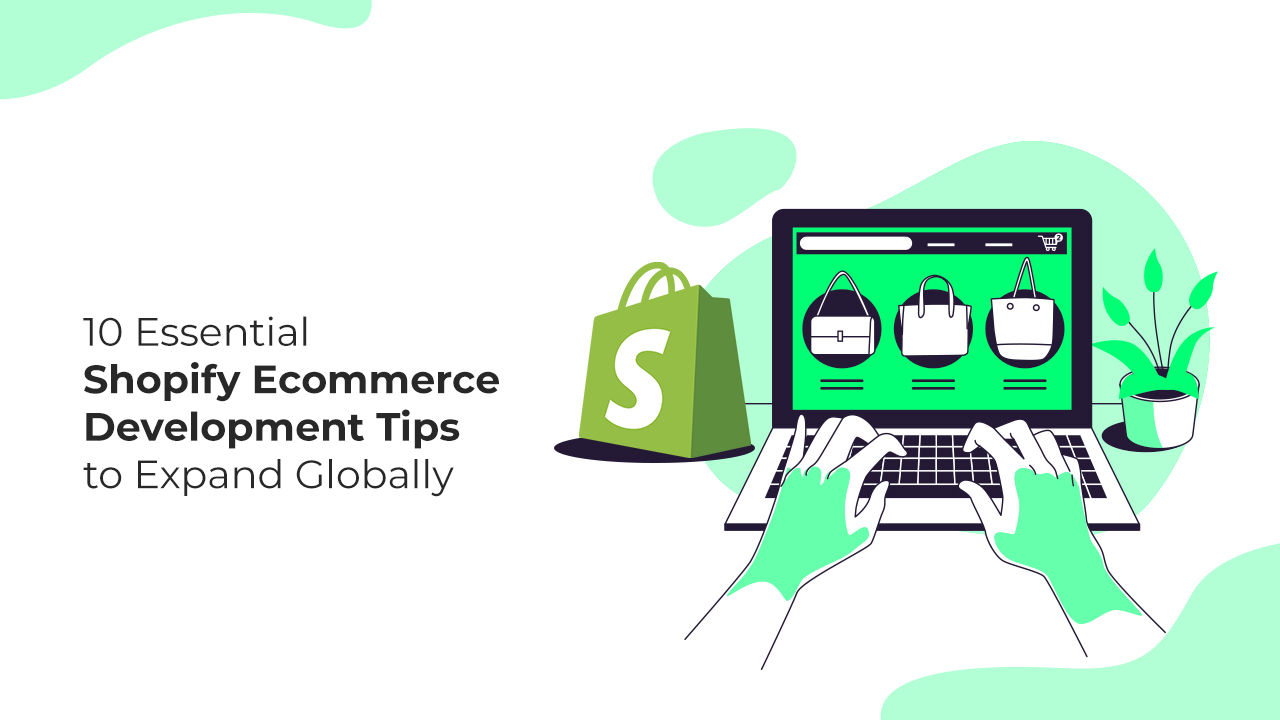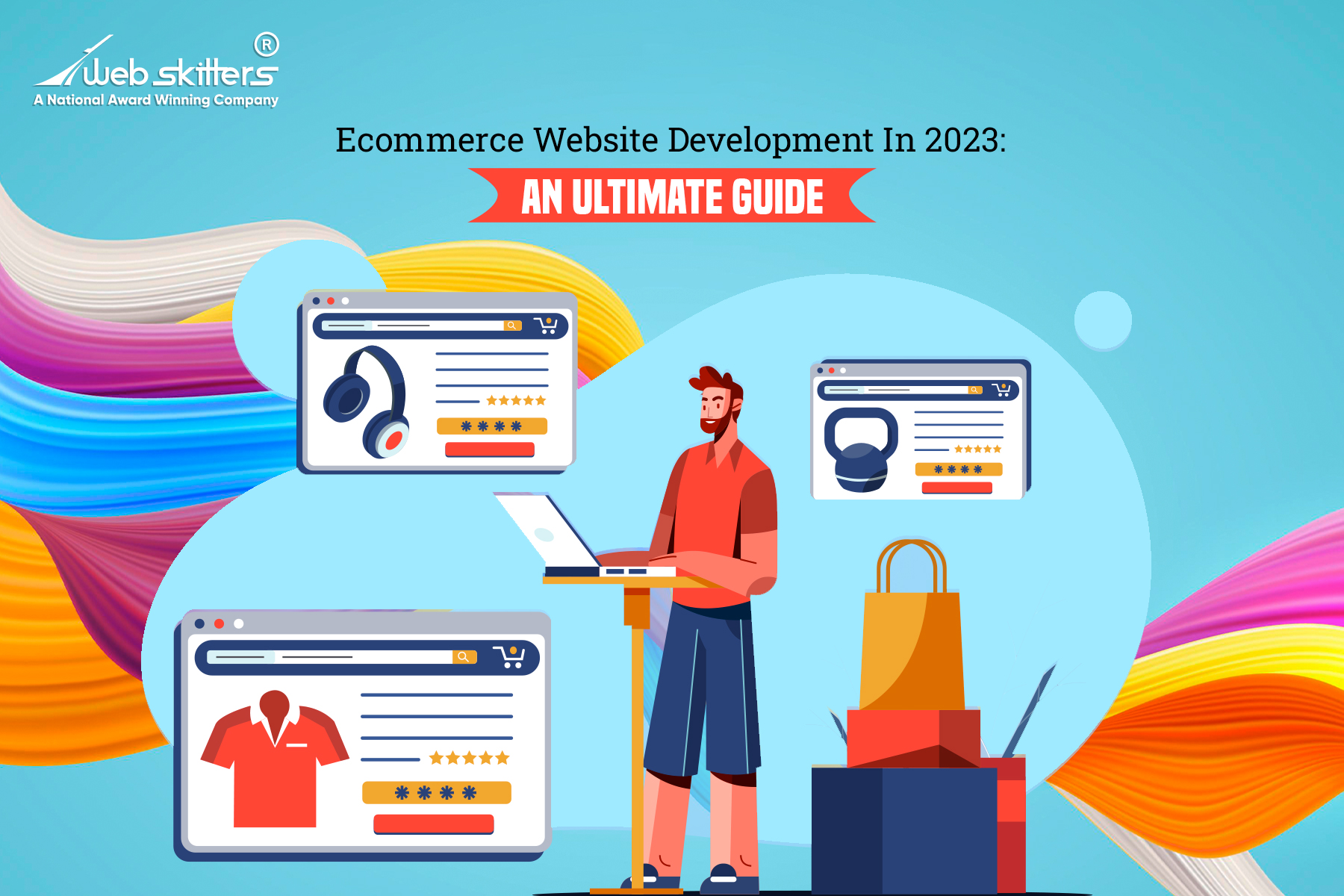
Ecommerce Website Development In 2023 – The Ultimate Guide
Online shopping is taking over the global retail market at a steady pace. According to a recent report shared by the U.S. Census Bureau News, 15% of sales currently take place online, and this estimate is increasing every day.
With approximately 12 to 24 million online Ecommerce platforms in action, it’s quite easy for an online store to get lost in this never-ending crowd.
Want your business to be able to surf through this wave?
Then build a highly-functional Ecommerce website with a reliable partner that delivers your customers the experience they are looking for.
However, a well-built Ecommerce website is not only about visual enticement. Visual aesthetics is of course a crucial part, but your website should also be able to drive real profits and sales for your business.
Want to take the discussion of Ecommerce Website development forward? In this Ecommerce website development guide, after a detailed analysis of how the best Ecommerce development team works, we have shed light on:
- What Ecommerce web development refers to?
- The functionalities involved
- Steps to build an Ecommerce website
- Its key features
- The importance of an Ecommerce website
And a lot more valuable information…
So, without further ado, let’s dive in!!!
What Is Ecommerce Website Development?
Ecommerce website development is the process of building and designing an e-commerce website where consumers can purchase products online. It involves implementing the technical and strategic plans for the front and back end of your website, including shopping cart, product pages, and support pages.
It’s much similar to a brick-and-mortar retail store – only you sell items and make transactions on a designated platform. Your customers can select items, place orders, arrange for delivery, and make payments on the same website independently, a truly one-stop shop for your business.
Isn’t it tough to imagine modern lifestyles without online shopping? It’s nearly impossible to live that way. This means development of ecommerce has already strengthened its roots and is here to stay for a long time. In recent years, even social media accounts are being transformed into Ecommerce websites – thanks to the mind-blowing options and easy-to-achieve steps.
In case you are hesitant to take the plunge into developing an Ecommerce website for your business, we would suggest you dip your toes. It’s super easy to get started if you have an efficient in-house group of experts or find a reliable web development partner.
Keep reading to know more about Ecommerce store development in the below sections.
What Does Ecommerce Website Development Involve?
A successful Ecommerce website development process involves a range of particulars with varied scopes. These particulars specify a lot of things, starting from presenting your brand identity in a digital context to developing the Ecommerce site itself:
1. Establishing The Brand
Is your Ecommerce store a B2B or a B2C operation? Considering the answer to this question, you will want to determine your target audience and tailor your online store project to meet their tastes and needs.
Starting from the photography style to the extent of detail in the product descriptions, you may want to curate everything according to the preferences of your audiences.
2. Getting A Domain Name
Before purchasing a domain name for your Ecommerce business, you may need to take into account the domain name availability. An eye-catching and easy-to-remember URL can boost traffic to your site by increasing brand awareness.
Hence, you need to check what URLs are available before deciding on your store name.
3. Choosing A Hosting Platform
After purchasing the domain, you can get your store up and running by choosing a host suitable for Ecommerce websites. Some web hosting comes in empty hands where you have to design and set up the website on your own.
On the other hand, some have pre-built website designs optimized for both mobile and desktop viewing.
4. Designing The Website
Your website design is much more than an alluring color palette and a memorable logo. It should effectively communicate your business goals. You have to give special importance to creating a navigable online store, with easy filtering and search options since these are the core functionalities.
5. Building And Launching The Website
If you want to save additional web development costs, we recommend you go for website builders or hand over your site to the Ecommerce website development agencies.
Third-party web development is one of the most cost-effective ways to get your online shopping store developed.
6. Determining The Number Of Orders To Be Fulfilled
You have to determine which fulfillment strategy you want to opt for – Dropshipping, In-house fulfillment, or third-party logistics. These determine the order capacity and how your website’s design is going to be.
You need to design your website and add elements based on the type of fulfillment.
7. Maintaining The Website
You need to regularly update your website to reflect the changes in your product line, stocks, and promotional offers. From time to time, you may also need to change the website’s design if it doesn’t fulfill your customers’ expectations or simply their browsing.
Options For Building An Ecommerce Website
There are plenty of options available when it comes to custom Ecommerce website development. Although there is no hard and fast rule to go for a particular option, we have shortlisted some feasible ones for you.
No matter what type of Ecommerce business you have, you can create your dream online store with these options in a curated manner. Check these out!
1. Open-Source E-Commerce Website Development
Do you already have your in-house IT team? Then going for the open-source route could be your first runner. The open-source Ecommerce platforms help you modify the codes, which means you can build your website from scratch with almost no customization limits.
Nonetheless, while using an open-source solution, your business will be responsible for several things, like web hosting, security issues, PCI compliance, and manual patches. This makes the open-source a bit expensive, tech-heavy, and cumbersome.
2. Use A Cloud-Based Ecommerce Service
If your online store operates in different countries simultaneously, a cloud solution is substantially advantageous over any other implementations. A cloud-based solution is a winner when it comes to the speed needed to manage a digital commerce website or app.
Scalability is also a major concern to Ecommerce website owners in terms of traffic which spikes seasonally, for instance, during Cyber Monday, Black Friday, Christmas, Easter, etc.
This results in an unimaginable workload for Ecommerce hosting. Under such circumstances, Cloud offers significant workload variations and meets promotional spikes or unforeseeable traffic outbreaks.
3. Customize A SaaS Solution
Don’t you have the required coding experience or necessary budget to develop an Ecommerce solution afresh? Then choose SaaS Commerce. Instead of developing and building a custom website on your own, SaaS enables you to rent the platform.
The platform provider, on the other hand, looks after the tasks like security, product updates, PCI compliance, and hosting.
There are so many SaaS Ecommerce solutions available in the market whose Open API feature benefits the merchants like you. With a lower cost and shorter go-to-market time, you can flawlessly create custom integrations that are almost similar to an open-source solution.
4. Leverage The Capabilities Of MACH Architecture
A single solution may not always be the right choice for businesses like yours with limited requirements. Rather, it can pose some challenges while your business scales and such as expanding the number of websites or tapping into new markets.
Wondering what’s the solution here?
It’s the MACH architecture (Microservices, API-First, Cloud-Native SaaS, and Headlines)is a bunch of guiding principles suitable for building enterprise software stacks. Unlike a menhir architecture, it gives you the scope to pick a technology that meets your Ecommerce business needs.
5. Hire Ecommerce Website Developers
If none of the above solutions work out for you, this is the ultimate way to get your Ecommerce site developed. Outsource your project to a trustworthy partner and get started instantly.
A top-notch service provider has sufficient relevant resources to build your product meaningfully through different stages, including Development, Design, Engineering, QA, and SEO. The best part about hiring an Ecommerce development company is that you can work with them remotely in your time zones.
Qualities Of A Successful Ecommerce Site
One of the most exciting steps in your Ecommerce business is setting up an online store.
However, lead conversion in this regard can be a bit difficult if your website isn’t exceptionally good. The question that arises here is – What Do Your Customers Want From Your Ecommerce Websites?
Let us answer this question. All your customers look for is a personalized experience, an easy shopping experience, and a visually pleasing web design. While an engaging website increases the dwell time metrics, it takes more to improve your conversion rates.
As a result, your website needs a lot of work to be done to revamp your online shopping business. Here, we have jotted down some key attributes of a successful Ecommerce website:
1. User-Friendly UI/UX Design
This is perhaps the most important feature a customer wants from your website. If a visitor struggles while navigating your website and can’t find what they are looking for, they will swiftly shift to other online retailers.
What contributes to a good user experience? Include a search bar, create a straightforward homepage, build clickable tablets, list the category pages clearly, and create a responsive design.
2. Online Security
One of the biggest questionable aspects that customers consider during online shopping is – Security in the payment network. They want their data to be in safe hands, and you want the online transactions to happen successfully.
Is there any solution to achieve both? Well, follow the industry’s best practices and ensure the gateways keep the user data encrypted by installing an SSL certificate.
3. Appealing Aesthetics
An aesthetically pleasing Ecommerce store can attract visitors and make them stay on the page. What’s more about it? It also creates a strong impression in the minds of your customers about your brand. Try to keep it as simple as possible but don’t overlook “beauty”.
If your site becomes difficult to navigate with fancy elements, forget them. Remember, “Less Is More.”
4. Mobile-Friendly Experience
The majority of the customers in today’s marketplace are reliant on mobile devices. They prefer browsing online stores on their phones because it’s portable. Therefore, mobile optimization of your online store is vital.
Make sure your website design gets auto-modified according to the screen size and shape. This will keep them satisfied and raise your conversion rates.
5. SEO
Every website needs SEO to succeed and rank higher in search engine results. Yours is also not an exception.
Placing the right keywords in the right place is essential just like maintaining a well-structured, quick-to-load, and easily navigable site. This increases your store’s visibility on the web and drives more traffic.
6. Faster Load Time
The bounce rate of your Ecommerce website will increase automatically if takes more than 3 seconds to load. 40% of your store visitors will abandon the page, and 14% will start shopping on different sites.
To solve this issue, keep your page speed at its best by creating simple designs, enabling browser caches, and minimizing redirects and plugins.
7. Robust Social Elements
Customers these days don’t shop blindly. They become reluctant about a product or an online shopping website if they don’t get the required reassurance.
It’s therefore your responsibility to include social media links on your website so that people can share, tweet, or like their experience with the products you have listed. Don’t miss out on the customer testimonials and product reviews as well.
The higher number of social proofs, the higher the level of trust.
8. Multiple Payment Options
One of the biggest difficulties online retailers as you come across is shopping cart abandonment. It feels disappointing to miss the deals during the final checkout process. For this reason, you need to make the purchasing stage for your customers as less-complicated as possible.
In addition to credit card, and debit card options, include more user-friendly options such as Stripe, or PayPal. Furthermore, plugins like ‘Buy Now, Pay Later’ tend to receive overwhelming responses from customers.
9. 24/7 Customer Service
The majority of people now consider customer service as one of the most crucial features when deciding whether to purchase from a company. In an Ecommerce business, one of the biggest success factors is providing accessible and helpful customer service.
A 24/7 customer service chatbot would work great in addressing your customers’ queries around the clock
10. Clear Images And Detailed Product Descriptions
Your customers will solely rely on the written information and the photographs you will provide n the product page before making a purchasing decision. If they don’t get a clear understanding of what your product is like, they won’t be convinced to buy it.
Use multiple clean, professional images captured from different angles for a single product with a detailed description. Keep the information scannable, personalized, and benefit-focused to the reader.
11. Offers And Discounts
Show us a shopper who doesn’t like discounts! We bet you won’t find any. If you are not offering discounts and deals on your Ecommerce store, you are missing out on something very important.
From coupon codes, and %-base rebates to free shipping and gifts, there is a lot you can do to make a difference. To make this process more seamless, run a discount engine on your virtual store, and you can manage a range of promotions quickly.
Essential Features Of An Ecommerce Website
Whether you are creating a new Ecommerce store or want to optimize your current store’s functionalities, creating a high-level Ecommerce experience is surely going to impress your customers. These are the must-have features for Ecommerce sites adding, which will take your online selling business to the next level.
Take a quick look at look at the checklist below:
1. Search Bar
It’s mandatory to add a prominent search bar on your website. Your visitors will be able to find the product or information they are looking for in no time.
2. Product Videos
Adding high-quality videos to your main store page as well as the product page can lead to increase conversions. This will help them to make an informed decision regarding purchasing your product.
3. Order Tracking
The most common query Ecommerce stores come across every day is “When Will My Order Arrive?” Including a simple order tracking feature is a MUST to increase your customer satisfaction and retention rate.
4. Related Pages/Products
Want your buyers to purchase more items from you or suggest your best products to their inner circles? Add Related Pages/Products on your Electronic Commerce website and boost the number of sales.
5. Product Filtering
Do you have a list of options to select the size, color, quantity, availability, texture, design, and type of your product? Allow your customers to be able to quickly find the products they are looking for with Product Availability Features.
6. Product Reviews
The product Reviews section on an Ecommerce site contains the maximum number of user-generated content. Add this section to your product page to showcase social proof to the shoppers about its fitment.
7. A Generous Return Policy
Do you want your customers to have confidence in your products? Create generous return policies according to the product categories and include them on every product page.
8. Dynamic Shopping Cart
This simple yet remarkable feature will allow your customers to review their cart from any page. What’s the best part? They don’t even need to navigate always to the checkout page.
9. Push Notifications
Push notifications to make a fantastic way to motivate your audiences to subscribe to your newest updates. It’s a super effective and creative option to catch the attention of your potential customers.
10. Multilingual Chatbot Support
Including a chatbot that can cater to customers from different corners of the world will make your store the most inclusive one amongst your competitors.
Plus, your website will attract so many different types of audiences that you can’t even imagine.
11. Mobile App
Is your online store mobile-friendly? If not, then consider developing a mobile app for your online shopping website. The app will make a permanent place in your customers’ minds more than a website.
12. Carousels
Having your latest sales and promotions displayed on the Carousels helps your Ecommerce store to grab the attention of the visitors.
Top brands like Walmart, Lowes, and Costco have had this feature already added to their website for a long time.
13. Product/Store FAQ
Add relevant and brief FAQs to your product page and also on the home page of your store. A lot of your customers’ basic queries related to shipping, returns, payments, etc., will be solved in this section.
14. Contact Information
Add the contact information at the top right corner of the main menu as well as the bottom of your website to give your store more authenticity.
Include your contact number, business Email Id, and physical store address (if any) so that your customers can easily reach out to you during their needs.
15. About Us
About Us is one of the most frequently visited pages of your site that presents your brand’s story to the audiences in the most compelling way.
16. Privacy Policy
Help the customers trust you with a well-defined and structured privacy policy. This will help you operate more transparently in the market.
Steps For Developing A Custom Ecommerce Website
Do you know that you don’t always need an ‘Oh So Perfect’ website right away? Rather, you just need the version that snaps up the customers’ attention in a highly competitive market. You can always customize it later!
So, we have broken down the procedure of making a simple but unique Ecommerce website into 19 crucial steps. Each of these steps is aligned with the core business goals.
Let’s get started, shall we?
Step 1: Set Clear Goals
This is the first step in entering the Ecommerce world. If you already have physical goals, setting the goals for your virtual store is not a difficult task. The real game starts if the online selling website is going to be the 1st presence of your business.
Decide both short-term and long-term goals. For example, increasing your company’s overall market share and revenue should be something you want to achieve in the long term.
But for the short term, keep targets like increasing traffic on your Ecommerce store by 5% in the next 2 years or growing the total income by 10% in the coming 3 years.
Step 2: Decide What To Sell
Long before thinking about how to open a digital shop, you should figure out what your business will be selling. There are uncountable lucrative options to start with but we suggest you focus on the products you enjoy using.
Whether it’s fashionable scarves, high-end sunglasses, or, minimalistic ornaments, choose evergreen products alongside trending products.
First, do extensive product research. Next, analyze the different markets you are entering.
And finally, consider the intensity of competition. Running an online shopping platform not only means knowing what customers need now but also what they might want in the future.
Step 3.Choose The Ecommerce Model
There are many types of Ecommerce business models but the two most common types include Business to Business (B2B) and Business to Consumer (B2C)
Business To Business: If you have a B2B Ecommerce store you will sell directly to other businesses like wholesalers, manufacturers, etc.
Business To Consumer: Products sold on a B2C website go straight to the customers without having any 3rd parties in between.
Step 4: Know Your Audience
You do the first round of audience research during deciding on the products. But there is nothing wrong with knowing your target market at a greater depth. After all, you have to curate everything on your store including the UX, UI, and visuals according to their needs.
Get details like:
- What are the age groups of your audiences?
- What’s their income range?
- What are their current favorite stores?
Step 5: Choose A Perfect Business Name
Thinking about a business name is just like deciding your child’s name. You want it to be one-of-a-kind. Instead of copying your competitors’ names, try to stand out. A bland, irrelevant name won’t bring any value.
Also, a cliché name won’t work. Go for a name that’s succinct, original, and represents your brand. By twisting and tweaking some words, you can come up with something pretty cool.
Step 6: Purchase A Domain Name
Now that you have found a business name, it’s time to find out a domain name. Grab it as soon as you can before building the store. A lot can happen in just a few minutes on the web, and you may lose the perfect URL at any moment.
Even if you don’t find the URL you are looking for, play with the words to snatch the domain name. Purchase it immediately so you don’t have to repent later. Trust us; we have been in the same place as you!!
Step 7: Understand The Branding
Emotional branding works best in today’s market. You should invest in the collective psyches of your customers with iconic visual identities, brand messages, remarkable logos, and amazing color palettes.
These are the web design elements that when come together drive a brand’s personality.
One more crucial aspect is that your eCommerce platform should tell a story that lingers in the minds of your audiences. They should know the reason behind the existence of your website in the first place.
Your store will soon become another unexplored portal if you don’t personify your brand.
Step 8: List Contact Information
How your customers can connect with you? Do you have a valid, professional Email? Do you have a valid phone number? Is there any physical store in any corner of the world (Not compulsory, but if there is any)? Oh, and most importantly, are there any social media handles for your business?
If the answer to any of these questions is “NO,” make it a “YES” as quickly as possible. These are the contact information that would give your business its maximum credibility. Note them down and prepare a compact list because these are going to be uploaded on the website.
Step 9: Find The Right Ecommerce Platform
There are so many options available if we speak about Ecommerce platforms – such as Magento, Drupal, Shopify, or plugins like WooCommerce. Each of them has individual pros and cons that may or may not align with your business’s objectives.
Consider these key features while deciding on a good Ecommerce platform:
- Product Management
- Responsive Design
- Customizable shopping cart
- Checkout page
- Multiple payment options.
Step 10: Determine Product Categories
You need to make different sections assembling similar kinds of products based on their purposes, traits, and benefits. Aspects like CTA, navigation, and store traffic, largely depend on how well-defined your product categories are.
These categories have to be straight to the point so that someone who will just casually come to your store for a visit easily understands and recognizes them. It’s not necessary to be creative here, just make your categories clear and coherent.
For example.Kids, women, Men, Apparel, New Arrivals, Luxury Brands, etc.
Step 11: Plan An SEO-Friendly Content Strategy
The Ecommerce world is now based on SEO-optimized content-first designs. So, build a website using real, engaging, and conversational content which satisfies the latest search engine needs.
You may leave complex texts, visuals, and elements to be added later. Have a well-defined SEO-friendly content strategy at the very beginning to make the store rank higher in the search results.
Include product photos, videos, infographics, bullet points, carousels, banners, catchy descriptions, and other forms of media that you believe will attract your customers. Make sure you are placing the targeted keywords evenly throughout the content and linking one product with another relevant product.
It’s the content strategy that ties the knot with your audience. This strategy shapes the overall information structure of your website. In online shopping website development, you must know how to address your customers’ pain points through content.
Step 12: Add Products And Product Descriptions
Once you get an aesthetic site designed, have the list of chosen products, and a detailed fulfillment plan outlined, it’s time to add products to your store. The key information to include in the product descriptions are:
- The name of the product
- Weight and sizes
- Color/size variants
- A short but clear description of every product.
- Price of the item.
When adding the descriptions, write them in an SEO-optimized way. You may also opt for including HD videos, and photos of the items to let the customers know beforehand what they will be getting.
Step 13: Set Up A Payment Gateway, Inventory, And Tax Tools
It’s an era where flexibility is the real king. You don’t want your customers to abandon their cart during checkout due to the absence of optimum payment gateways.
Make it easier for them by including several payment options like Visa, Mastercard, PayPal, Apple Pay, etc. In case you are selling high-risk products, make sure the options support these needs.
Also, find the right inventory and tax tools to avoid unwanted hassles like tax evasion, frequent product stock-outs, etc. These will do nothing but hamper your customers’ experience.
Step 14: Find The Right Shipping Software
Using the right shipping software, order fulfillment and shipping of larger quantities of products become easier.
A lot of challenges will be crash-landing during shipping but you should be well-prepared beforehand to deal with them. And shipping software can be your strongest weapon in that.
You can ship yourself or reach out to a third-party service – whatever suits you. However, for the former, you have to endure a lot of additional headaches, starting from packaging materials to carrier issues.
Step 15: Conduct A Quality Assurance Testing
You’re almost there. Before you go live, here’s one mandatory step to take. You have to review every technical and non-technical detail of your Ecommerce store to be sure everything is working fine. QA testing will work best here.
If you hire an Ecommerce website development agency, it’s their sole responsibility to perform QA and address the issues before delivering the project.
In addition, you can confirm the below criteria on different web browsers:
- Is the website working properly?
- Do all the products, descriptions, and photos, are appearing the way you want them to?
- Are all the buttons and links redirecting you to the accurate pages?
- Are all the payment gateways working properly?
- Does the website work perfectly on mobile phones and tablets?
Step 16: There you go…..Launch Your Website
If everything looks great, you are ready to launch your Ecommerce store and start selling. Enjoy the new experiences of running an online shopping business!
The Importance Of Ecommerce Website Development
Do you remember the time when the COVID-19 pandemic took over the world and it was only Ecommerce businesses that flourished? Since that time, business owners realized the importance of having an online store on top of the physical stores.
No matter what you sell online, an Ecommerce website creation will give your business a competitive edge from different aspects.
Want to know about it in more detail? We have found these benefits that our clients reported back to us after we delivered them Ecommerce websites successfully:
1. Higher Customer Reach
When your business develops an Ecommerce website and starts operating it, your targeted consumers get direct access to your business regardless of the devices they are using.
Even if they don’t have a laptop, they can access your store from their smartphones and place an order. If they need something, they can easily land on your website, browse through the products and purchase the one they have been looking for.
As a result, your business gets a higher reach at a global scale.
2. Never Ending Sales Opportunities
Brick and Mortar stores have a plethora of limitations that block a range of untapped sales opportunities.
For instance, offline markets operate for certain hours at certain times of the day. This means that customers can only purchase them within that specific window.
However, in the case of an Ecommerce website, the scenario is completely different. Online stores remain open 24/7 without any electricity bills, rent, water, or bills, involved and customers can place orders anytime they want.
3. Low Maintenance Costs
If you compare a virtual shopping website to an in-store purchase, you will see how different they are from each other in terms of maintenance costs. The physical retail stores are too costly to maintain because of rent, lease, electricity, insurance, equipment, and interest payments.
On the contrary, an Ecommerce website involves only a certain amount of maintenance charges and that’s it. Not only they are cost-effective but also they are environmentally sustainable.
4. Operate Internationally
With a physical shopping store, it’s not impossible although difficult to gain brand recognition beyond the national borders. The best can happen is a few foreign customers can come to your store for a visit.
Contrarily, an Ecommerce website gets an unimaginably wider reach at the international level. Moreover, if your store provides international shipping to different countries, it will gain enormous global reach while the revenue will spike exponentially.
5. Run Your Business Remotely
Offline businesses are people operated. You need receptionists, cashiers, salespersons, and security guards, which add to the weekly/monthly maintenance costs. But when you develop an eCommerce site, you can simply manage it from anywhere in the world.
A laptop and a stable internet connection are all that you need along with some web security and maintenance costs. Forget about all the other expenditures!!!
6. Targeted Marketing
While selling things online, you skip the step of spending a large amount of money to reach your audiences.
With an Ecommerce website, you can easily choose who will see your ads based on key phrases, interests, geographic location, demographic information, hobbies, and interests. This provides a better ROI to businesses.
7. Business Scalability
Managing a physical store becomes difficult when there is a sudden increase in the flow of customers, especially during the time of sale. Comparatively, coordinating an online store is super easy.
All you require include some digital twists, extra inventory, and additional storage space. Also, you don’t need to take the stress of opening new stores at different locations and hiring storekeepers.
How Do I Choose The Right Ecommerce Website Developer?
Setting up an eCommerce website is easier said than done. You have to be highly skilled at coding and employ your creativity to build an aesthetically appealing Ecommerce website.
Plus, if you have no previous experience, there is a high chance that you may mess up a lot of things. We advise you to hand over your project to a professional Ecommerce development partner and let them handle the rest instead of doing it by yourself.
To help you find the right Ecommerce website development agency for your business, we have gathered some expert tips. Check these out:
1. Evaluate The Website
This is the first step in choosing the right Ecommerce development company. Before you even proceed to check out their portfolio, evaluate the agency’s official website to get a decent idea about how they work. You will know about their features in detail by clicking on their services.
Apart from this, see whether they adhere to the SEO best practices and also gauge the quality of their website content. Don’t forget to determine if their website is accessible and readable on different mobile devices.
2. Examine Their Portfolio
To handpick your extended team of online store development sizing up their portfolio and reviewing their previous work will be of great help. You will get clarity on how versatile they are and how well their reputation is established in the market.
Usually, the portfolio remains displayed on the company website. In case there aren’t any, you may request them to see their past projects via conference call or email.
3. Check The Reviews
If the development company is legit, it wouldn’t hesitate to show them its customer reviews. Yes, you will get to see some on the company website, but those are not reliable enough when it comes to unbiased reviews.
The solution?
Read the client testimonials on popular 3rd-party platforms like Facebook, Google My Business, and Clutch. If possible, try to get in touch with the previous customers and find out how their experience with the agency was.
4. Fix Your Budget
If it’s your first time partnering with a digital store development agency, it’s advisable to get started with a draft budget in the form of the Total Cost Of Ownership (TOC).
After creating the draft, don’t hesitate to share it with them in advance. Having this can help you negotiate the total cost with the agency as well as save a lot of your time.
5. Know Their Development Process
You are investing your hard-earned money to develop your Ecommerce website; so, it makes sense if you want to be familiar with their development process. If they provide you with a roadmap, you should deep dive into every single step.
This will help you compare among agencies and pick the best one that satisfies your needs.
6. Call Them Up
Still not satisfied with the information they provided to you? Ask for their contact numbers and reach out to them to know more. At least you will find out how wonderful or terrible their customer service is. Some questions to ask them on phone may include but are not limited to:
- How long will it take for them to deliver you the final product?
- What approach do they follow while building an Ecommerce site?
- Who will be the responsible person/persons for your website and what’s their level of experience?
7. Inquire About Their Maintenance Services
Heedless on the type of Ecommerce website you have, it needs updating and maintenance from time to time. Most essentially, the agency that will be helping you with the development should also take the responsibility of maintaining your online store.
Do not forget to ask about their maintenance approaches in detail.
8. Choose Nearshoring Or Offshoring
Since COVID-19, the world of web development has become more dependent on Offshore agencies. Remote work is still going on across the world in full swing and it’s proved to offer so many profitable benefits.
Instead of staying confined in a physical office setting, we advise you to go for outsourced development.
How To Calculate The Ecommerce Website Development Cost?
There isn’t a dearth of Ecommerce website development companies to choose from in the market. The interesting part here is that all the companies will tell your different things and give different price estimates which can make it difficult for you to compare.
Calculating the Ecommerce website building cost is a critical part of the entire decision-making procedure. If you can outline what you exactly need, you can avoid paying any amount unnecessarily.
You can do it like a pro without being a pro!!!!!
How?
There are some key items to consider to calculate the actual Ecommerce website development cost. Any good web development company will give you a cost estimate based on these factors only.
Here are the items you need to pay for:
1. Ecommerce Software Costs
The cost of the online store platforms takes the lion’s share of the total cost of building a digital shopping website. There is a myriad of software to choose from:
- BigCommerce: It’s the leader in this space. This SaaS platform is easy-to-use, feature-rich, supports headless offerings, and provides high-level performance.
- Drupal: Drupal enables you to manage carts, transactions, and products as the primary concerns in addition to media and content.
- Shopify: Shopify’s drag-and-drop feature makes it fairly easy to build an online shop without the need for any code. You can get a minimalistic website ready to launch pretty quickly.
2. Domain Name Costs
The domain name cost is calculated annually if you are not able to pay for the next few years. It takes somewhere between $2 and $20 per year to purchase a domain name on average.
The platform from where you get it and the extension determines its price.
3. Hosting Costs
The immediate step after registering a domain name is finding a suitable web host. Solutions like Shopify or BigCommerce are cloud hosted which is included in the subscription cost.
In the case of self-hosting, the cost ranges between $80 and $730 every month based on your website traffic, automated services, and other features.
4. Payment Processing Costs
It’s the biggest irony how you want but can’t ignore the payment processing costs. This amount completely depends on the type of payments you offer to your buyers at the time of checkout.
For instance:
- For PayPal, it’s 2.9% + $0.30 for transactions over $10.
- Whereas, for Authorize.net, the amount is 2.9% + $0.30 per transaction + a $25 monthly fee.
5. SSL Certificate Costs
The price for an SSL certificate ranges from $20 to $70 per year and it’s one of the least expensive yet very important components of your online store development cost. They provide the network security both you and your customer need.
6. Design Costs
The Theme And Design Costs
Most of the leading Ecommerce solutions have a bunch of Ecommerce store design themes to choose from. Some themes may cost $60-$200 whereas some may cost nothing extra that the price of using the platform.
Add-Ons And Extensions Costs
Even the best Ecommerce solutions don’t have everything you need to set up a perfect online store.You need more extensions, plugins, and add-ons which increases the cost even more.
For example, the extensions MagentoEcommerce development platform offers costs from $0-$15000. Furthermore, Shopify store development offers many premium and free apps.
7. Some More Costs
Some ongoing costs in relation to Ecommerce website functionalities to take into account involve: Data Backups, Email Marketing, Inventory Management, and Product Marketing.
Benefits Of Hiring Ecommerce Website Developers
No wonder, Ecommerce is the fastest-growing retail market in the present world, and being able to be a part of it is overwhelming. The very initial days of dipping your toes into the Ecommerce business involve launching a robust and engaging platform.
From our years of experience in online store development, our opinion for you is to hire professional and experienced Ecommerce website developers. But why are we suggesting this?
Let’s take a look at the bigger picture:
- A team of professional online shop developers always strives to deliver the project on time.
- You can just shrug off all the worries about the result of the project since the expert developers will ensure top-notch quality.
- Professional online store builders have years of experience and domain expertise in the latest technologies and Ecommerce trends.
- They know how to maintain international standards so that your store can enjoy a competitive advantage.
- Hiring Ecommerce development services allows you to focus on other priorities by saving a lot of your valuable time and money.
- A professional group of Ecommerce developers provides you with support and coordination consistently.
- They also make sure your website is SEO-friendly, and it’s ranking higher in the search engines.
Need A Good Ecommerce Website Developer?
Developing and launching an Ecommerce website involves different levels of complexity. Whether you begin with an end-to-end solution or a complex platform, you will feel the need for some additional web help in the online store development lifecycle.
Sit back and relax – although it’s your store, you don’t have to take all the stress alone. Webskitters Technology Solutions is here to help you out. We are the best Ecommerce development company in the USA having the largest network of solutions, services, and professionals. We are ready to partner with your Ecommerce website development project, no matter how complex your requirements are.
Our team is available to answer any questions. Get in touch with us today.
Frequently Asked Questions
1. What Are The Types Of Ecommerce Websites?
The different types of Ecommerce websites are:
- Business To Business (B2B)
- Business To Consumer (B2C)
- Consumer To Business (C2B)
- Consumer To Consumer (C2C)
- Marketplaces
- Online Retailers
- Affiliate Websites
- Single-brand websites
2. What Is The Role Of An Ecommerce Website Developer?
The key role of an Ecommerce website developer is to plan and develop an online store from the scratch as well as coordinate its technical aspects such as its scalability, security, and its performance.
3. Do I Need Both Frontend And Backend Developers for setting up an Ecommerce website?
Yes, you need both Frontend and Backend developers to develop an Ecommerce website. The front or in other words, the digital storefront, is the part that digital shoppers get to see and interact with. The backend on the other hand deals with all kinds of data such as promotions, order details, prices, and fulfillment.
4. How Do You Determine The Features Of Your Ecommerce Stores?
Here are some ways to determine the features of your Ecommerce website:
- Assess the design experience
- Study the actual reviews posted by customers on the website.
- Analyze their organic traffic.
- See how easy the checkout procedure is
- Evaluate the conversions with relevant Call-To-Actions.
5. How Much Does It Cost To Build An Ecommerce Website?
The cost to create an Ecommerce website starts from a very small margin, like $100. However, this amount increases while your starts growing and the requirements increase.
6. How Much Does It Cost To Hire Ecommerce Developers?
The cost to hire Ecommerce web developers varies from one agency to another based on several factors such as the size of the project, duration, resources employed, customization requests, and many others. It’s better to get in touch with the concerned team of the agency and request a quote.
7. Which Is The Best Ecommerce Platform?
We can’t regard a particular Ecommerce platform as the ‘Best’ since each of the most commonly used platforms has its Benefits.
For instance:
- Shopify is best for Drop-Shipping.
- Wix has the best Drag-and Drop-Editor
- BigCommerce is ideal for boosting sales.
- WooCommerce has the best versatility.
- Magento eCommerce development provides the best kind of flexibility and security.

 Ecommerce Development
Ecommerce Development 